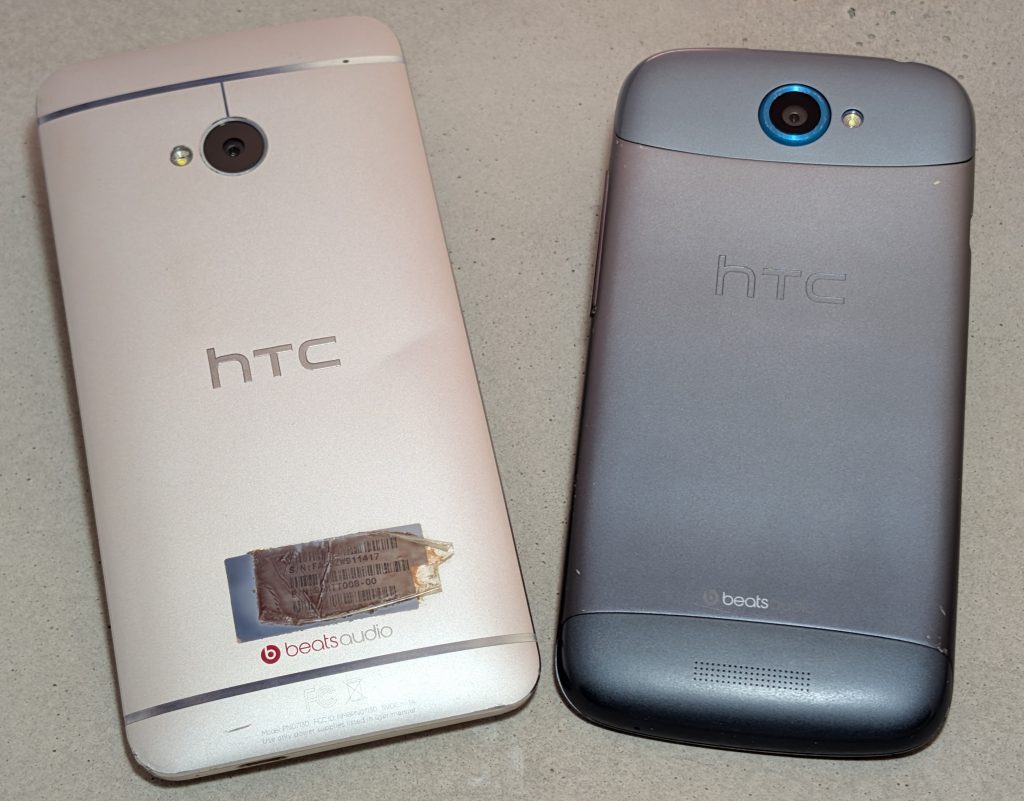I’ve had a cell (or mobile) phone now for at least 20 years. The first couple were just your traditional voice and text only dumb phones (a Nokia first, then a positively microscopic Motorola flip phone that I could carry in the watch pocket of my jeans). But in 2010, my wife and I upgraded our phones and our phone plan and got Android smart phones.
We were with T-Mobile (still are, for that matter), so the iPhone was not an option, which made my wife very sad. And in those days, while you could buy phones off of an open market, it was usually easier, and at least cheaper up front, to buy them from your provider. So we got Motorola Cliq XT phones. And, plans being what they were, you’d usually look to upgrade after about 2 years with the phone.
So in 2012, I moved up to the HTC One S. Samsung and HTC were fighting it out in the Android cell phone arena, and Motorola was being left behind. HTC was widely considered tops for their innovation and ability to produce phones that weren’t simple bar-type phones.
HTC had it down at that time. The phones were solid, performed well, were super thin, and usually had a very fresh design that contrasted from almost anything else out there. I loved this phone. The HTC skin over Android was not overblown and loaded with bloatware. It was attractive and easy to use. And the rounded edges of the phone made it comfortable to hold in a era where only weirdos and business people used bluetooth earpieces. The body was all metal and was smooth and just impressive to hold. And the bonus was that at its thinnest point, it was just 0.31 inches thick.
The One S was sold exclusively by T-Mobile in the US, which made it doubly unique at the time: T-Mo was fourth in the four horse race between them Sprint, AT&T, and Verizon. And they had the worst coverage of the four. But I didn’t care much about that. I lived in a large city, and rarely made trips outside the city. So I had a rare phone from a rarely used mobile carrier in my area. I was special.
A year later, HTC continued the One line and brought out the HTC One (M7). The reviewers raved, and when I was able, I upgraded to it late in 2013.

It had a metal unibody construction and front facing stereo speakers. The screen was absolutely flat and the glass went right to the edge of the phone. It was another solidly built phone. It was another hit.
And again, it was fairly unique. HTC, while still one of the top cell phone makers, was getting outpaced by Samsung, and it seemed that if you didn’t have an iPhone, you had a Samsung. I remember it being unique enough that during a fall trip to Duluth, MN, my wife and I were taking pictures near Lake Superior, and another couple asked us what phone mine was.
The HTC One was substantially more premium than the One S. Their skin over Android was even more refined and lovely. Everything on this phone just worked and worked well. The battery life was awesome.
I loved this phone enough to keep using it for three years until I really couldn’t anymore. The OS wasn’t going to be upgraded any more, and it was starting to have some problems. So in early fall of 2016, I upgraded to the Samsung Galaxy Note S7, and the disaster that would become.
Obviously, I’ve kept these two phones. I haven’t started either up in several years, but last time I did, I was still impressed with how they worked and looked, and I kind of wish someone would take up this design language and run with it. I mean, my current phone, the Google Pixel 9 Pro XL is wonderful, but in an era of kind of drab rectangular slabs, it is just another drab rectangular slab. But both of these were different from anything I’d had before or since. And I loved that.


